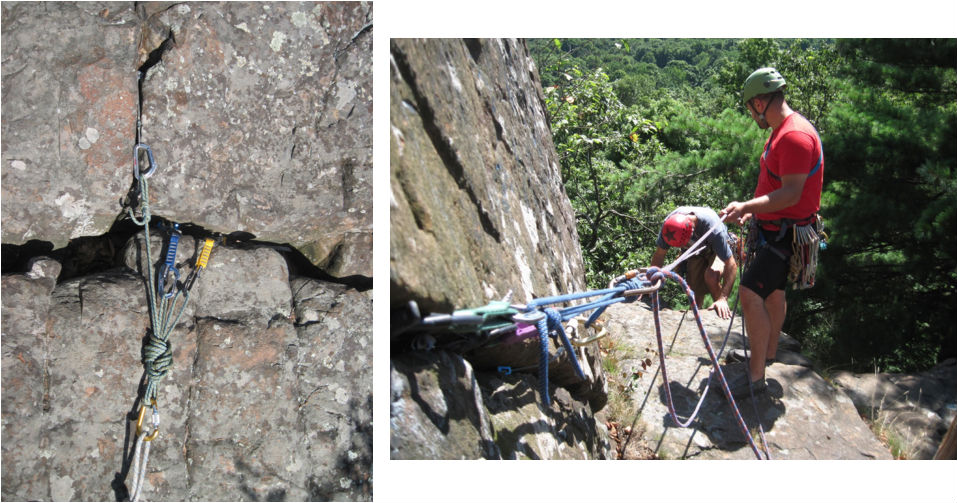Concepts in Anchor Building
By: Matt Shove
Often times we build anchors while on climbs. We need to belay, or there is a logical place to end the pitch , for example, a large ledge. These places often hold a number of options, and there is usually a better one. Perfect cracks, solid rock, perfect gear placements, a shiny two bolt anchor, or even natural anchors like horns and boulders. What we do with them and the methods we attach ourselves to them is what really matters. The interface between us and the individual anchors can set us up for an efficient transition, or time wasted wondering how all of these knots and twists got into the rope. Here are a few techniques I used recently while working at the Gunks in upstate New York and more locally at Ragged Mountain. A number of concepts that have turned into acronyms have been used, but let me remind you that load sharing is the goal most of the time. Remember, these are just a few choices in a sea of options. ‘Choose, but choose wisely’ Knight, Indiana Jones and the Last Crusade.
Cordelette 101:
Three bombproof pieces in two independent crack systems. Tied together and pre-loaded for the anticipated load is what makes this a good option. The load is shared to some extent, and we have a common point to work from. Seven millimeter perlon cord is the best option here. This is pretty standard stuff when it comes to anchor building.
Shiny Modern and well placed bolts. 3/8 to ½ inch. The next pitch involves a traverse, right off of the anchor.
If you have well placed modern bolts, that are tight with no rust, and hangers that don’t spin, AND a new nylon sling, you have the option to help you move efficiently. In walks the Magic X or Sliding X self equalizing system. It is not redundant, and has no common point, but is efficient, and simple. (This anchor can be made redundant with the addition of a second sling used in the same configuration, or two limiter knots (or even a Quad)—however, this limit’s the efficiency and uses another sling that you might want on the next pitch). I did add a limiter knot to address anchor failure. Every aspect of this is acceptable to me because I was belaying from right there and monitoring the anchor. I was the redundancy. I could beef it up in a split second if needed. This anchor shares the load as evenly as possible, and accounts for extension, albeit within reason. I often use a half sling length as a reasonable amount of extension, and I’m talking about a shoulder length runner—24″ or 60cm. Everything in this system needs to be in good nick, because there isn’t much to it.
This is a For Members Article. For More on this article go to https://micrometa.rigginglabacademy.com/concepts-anchor-building/#more-6306 and enter RESCUERESPONSEGEAER and get 20% Annual Membership.








